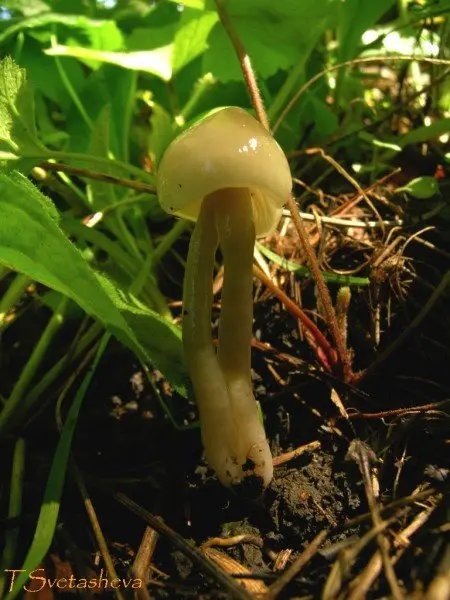Gliophorus oily (Gliophorus irrigatus)
- Division: Basidiomycota (Basidiomycetes)
- Subdivision: Agaricomycotina (Agaricomycetes)
- Class: Agaricomycetes (Agaricomycetes)
- Subclass: Agaricomycetidae (Agaricomycetes)
- Order: Agaricales (Agaric or Lamellar)
- Family: Hygrophoraceae (Hygrophoraceae)
- Genus: Gliophorus (Gliophorus)
- Type: Gliophorus irrigatus (Oiled Gliophorus)
 Glyophore oily is found in Eurasia, some regions of North America. In the Federation, mushroom pickers found it in the Far East, in Karelia, in the Urals, as well as in the regions of the North-West (Pskov, Leningrad, Murmansk).
Glyophore oily is found in Eurasia, some regions of North America. In the Federation, mushroom pickers found it in the Far East, in Karelia, in the Urals, as well as in the regions of the North-West (Pskov, Leningrad, Murmansk).
Season – early August – late October (in some years there may be no mushrooms).
Prefers to grow in grass, meadows, clearings of deciduous and mixed forests. Likes wet soils. Glyophore oily forms rather large groups (up to 15 specimens).
The fruiting body is the cap and stem. The fungus belongs to the lamellar species. Hat – up to 5-7 centimeters in diameter, beige, silver, brown. In young mushrooms – very convex, later – flat, prostrate. There may be a bump in the middle.
The plates under the hat are rare, the color is gray, whitish.
The leg reaches a length of up to 8 centimeters, the color is gray, beige. There is a lot of mucus on the surface of the leg, often there is a groove. Inside is hollow.
The pulp is gray, smell and taste are neutral.
Glyophore oily is considered a rare mushroom, while violent human activity (plowing meadows, grazing) reduces the number of the species.
Inedible.









